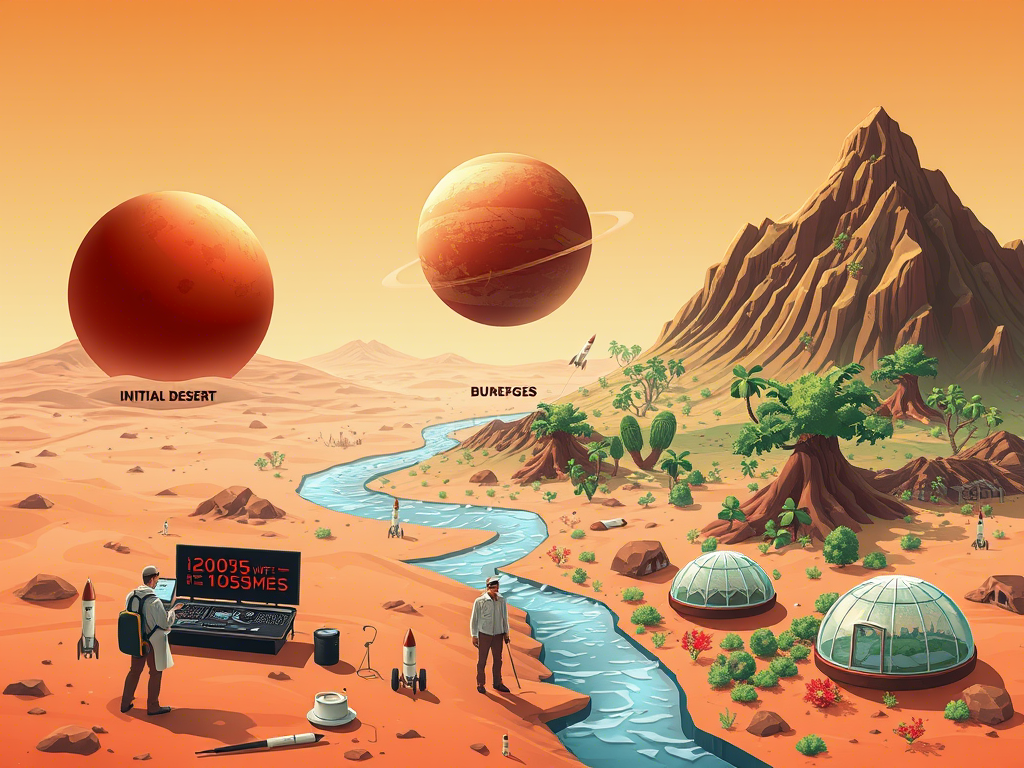From Red Planet to Green Future: Researchers Map Out How to Change Mars in Just 3 Phases

From Red Planet to Green Future: Researchers Map Out How to Change Mars in Just 3 Phases
A groundbreaking paper published in Nature Astronomy has reignited interest in one of humanity’s most ambitious dreams: transforming Mars into a planet that can support human life. Authored by researchers from Pioneer Research Labs and the University of Chicago, the study dives deep into the scientific feasibility of terraforming Mars — and what it would really take to make it happen.
🔬 Why Now? A Fresh Look at an Old Idea
For decades, the idea of terraforming Mars — altering its environment to resemble Earth’s — has captured imaginations. But surprisingly, no major scientific analysis had revisited the concept since 1991.
Nina Lanza, a planetary scientist at Los Alamos National Laboratory and co-author of the paper, explains:
“It might come as a surprise, but we haven’t seriously re-evaluated terraforming Mars in over 30 years. Yet during that time, our understanding of the planet, along with advancements in geoengineering, bioscience, and space exploration, has evolved dramatically.”
This new research is a call to revisit the topic with updated knowledge and tools.
🌍 The Three-Step Vision for Warming Up Mars
The basic approach outlined in the paper follows a logical sequence:
- Warm up the Martian atmosphere
- Introduce engineered microbes to produce oxygen
- Allow liquid water to form and support more complex life
Mars today is cold and dry, with an atmosphere too thin to support life. But if scientists could raise its temperature even slightly, it could trigger a chain reaction — melting ice, releasing trapped CO₂, and creating conditions where microbial life might begin to thrive.
⚖️ Is Terraforming Ethically and Practically Viable?
Before diving into large-scale plans, the authors urge caution. They emphasize the need to address key questions:
- What are the real costs and risks?
- Could something go wrong?
- And perhaps most importantly — do we have the right to change Mars at all?
As they put it:
“We must first understand what it would take to warm Mars before deciding whether it’s worth doing — or whether we should leave it as it is, untouched.”
🛰️ What Resources Does Mars Actually Have?
The paper takes a detailed look at Mars’ natural resources, including:
- Frozen water deposits
- Traces of carbon dioxide in the soil and polar caps
- The composition of Martian regolith
Using these elements wisely could be the key to triggering environmental changes without having to bring everything from Earth.
Some proposed methods include enhancing solar heating or releasing greenhouse gases to trap heat in the atmosphere — techniques that could potentially raise the planet’s average temperature by several degrees within decades.
🧪 Science That Benefits Two Worlds
According to the researchers, studying terraforming doesn’t just help us prepare for Mars — it also benefits Earth.
Advances in technologies like:
- Soil restoration
- Drought-resistant crops
- Ecosystem modeling
Could offer direct applications to global challenges such as climate change and food security.
As the authors note:
“Mars terraforming research serves as a powerful testbed for planetary science — helping us validate theories and uncover gaps in our knowledge.”
🌌 Beyond Mars: A Gateway to the Stars
In the long term, the implications of this research go far beyond one red planet. Understanding how to transform Mars may be the first step toward making other worlds habitable — opening the door to interplanetary colonization and deep-space exploration.
The researchers conclude:
“We don’t yet know the full extent of what’s physically or biologically possible. But learning how to reshape a planet could be the beginning of something much bigger — the first step toward destinations far beyond our own solar system.”
📌 Sources
This article is based on research published in Nature Astronomy , conducted by experts from Pioneer Research Labs and the University of Chicago. Additional insights were provided by scientists at Los Alamos National Laboratory.





